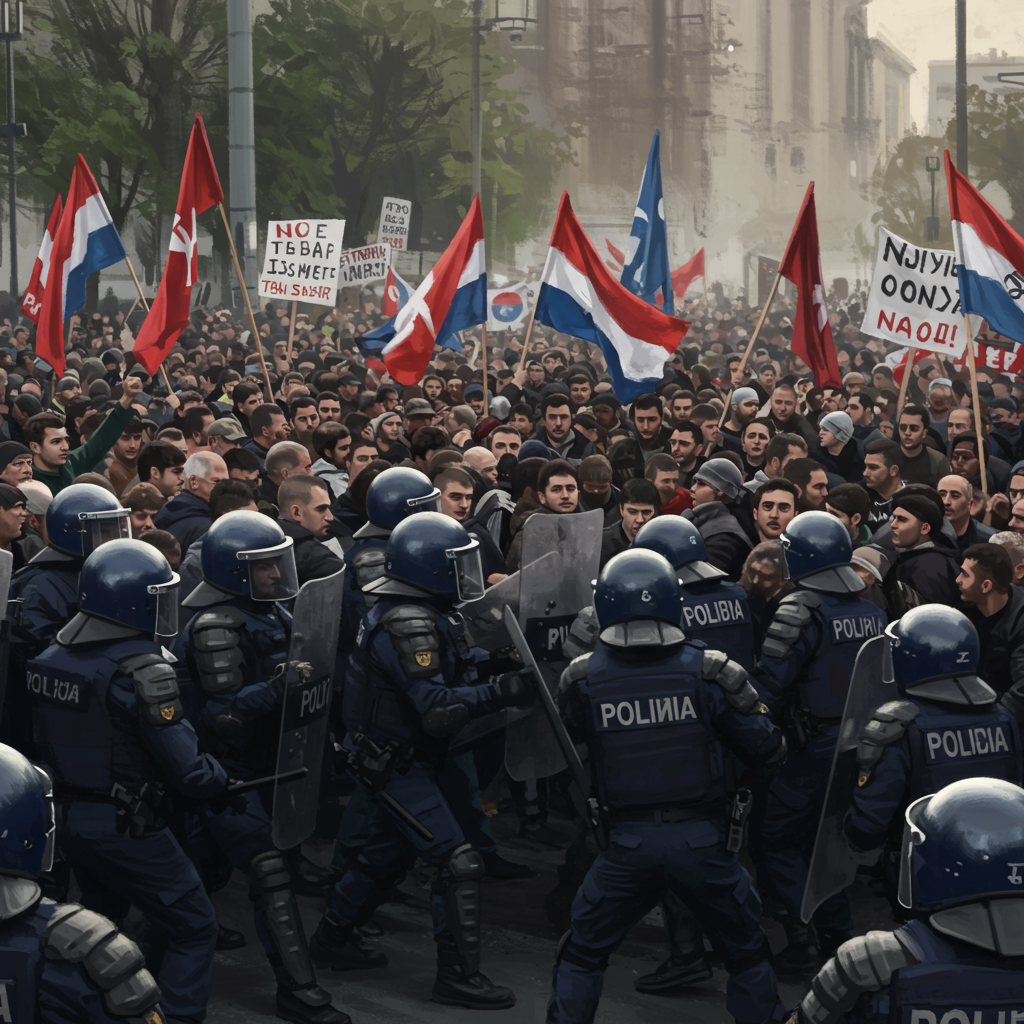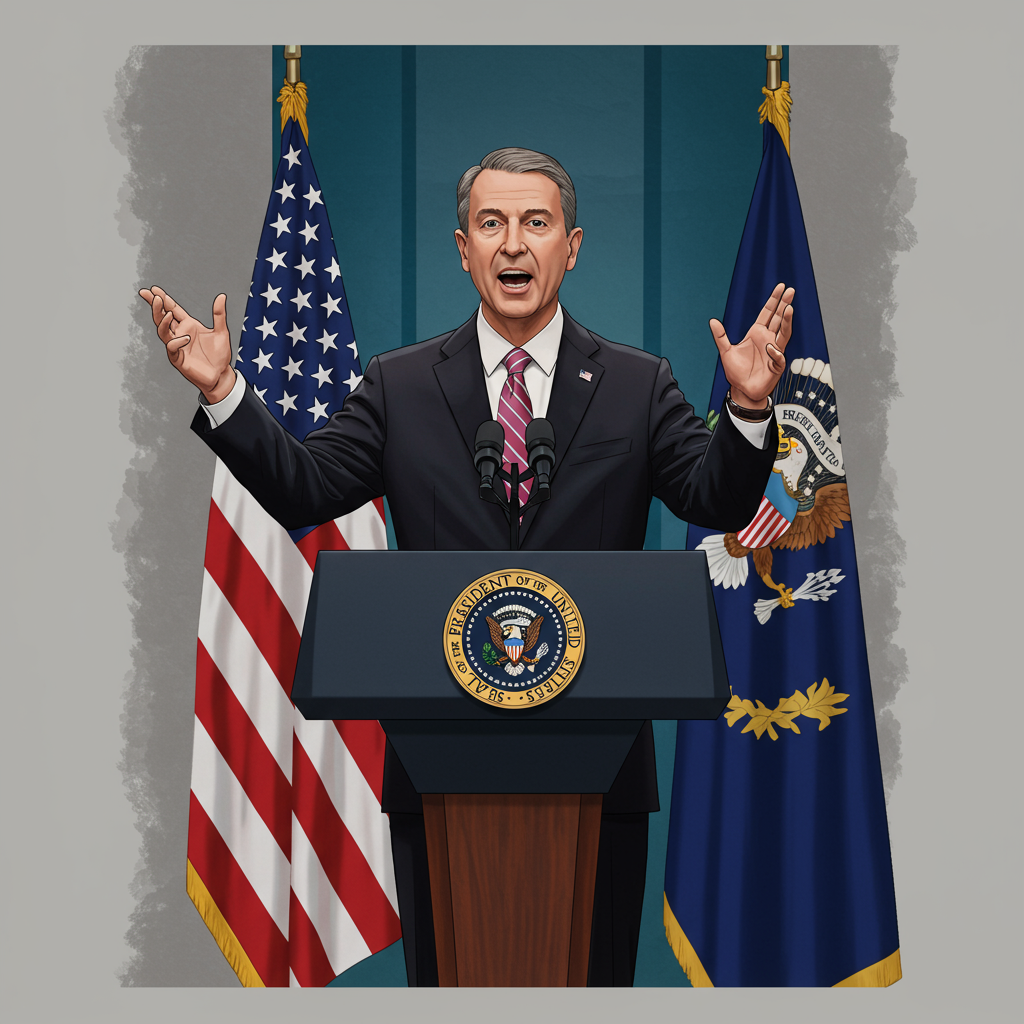A poignant moment unfolded as French President Emmanuel Macron bid farewell to King Charles III and Queen Camilla outside Windsor Castle. This gesture, a blown kiss, marked a warm and unexpected personal touch at the conclusion of a significant state visit. It underscored the blend of formality and burgeoning familiarity characterizing recent interactions between the French President and the British monarchy. The brief, 28-second exchange included a handshake before the President departed.
The King and Queen were seen receiving the affectionate farewell from President Macron. This notable moment occurred as the official state visit drew to a close at the historic royal residence. The gesture itself spoke volumes about the evolving nature of diplomatic relationships at the highest level. Such displays of personal warmth can often symbolize deeper connections and shared understanding between nations.
A State Visit of Strategic Importance
President Macron’s visit was the first state visit by a French President to the UK since 2008. It was also the first by a European Union leader since Brexit. Both the UK government and France aimed to underscore the enduring strength of relations. They also sought to potentially “reset” the partnership in the post-Brexit era. The visit served as a public affirmation of the alliance. This alliance persists despite recent political challenges.
The multi-day visit combined traditional pageantry and ceremony with serious political discussions. It highlighted the vital importance of the UK-France alliance. Leaders stressed its crucial role in an increasingly unstable global political climate. They agreed that old alliances are more necessary than ever in a fragmenting world.
Deepening Ties Amidst Global Challenges
A key event was a lavish state banquet hosted by King Charles III at Windsor Castle. This venue was used instead of the usual Buckingham Palace ballroom due to renovations. Around 160 guests attended, including senior royals, President and Mrs Macron, and prominent figures. Sir Mick Jagger and Sir Elton John were among the notable attendees.
King Charles delivered a significant speech at the banquet. He spoke partly in French, celebrating the deep cultural, political, and historic ties between the nations. The King noted that the UK and France have “stood ever closer” since his visit to France in 2023. He emphasized that both countries face a “multitude of complex threats.” These threats emanate from multiple directions. He stated they confront them together “as friends and allies.”
Leaders Address Shared Threats
Both leaders highlighted key areas of cooperation. These included defence, technology, and tackling climate change. King Charles asserted that the two countries “have a critical role to play together.” He specifically mentioned their joint efforts in supporting Ukraine. This support is crucial for the “defence of liberty and freedom from oppression.” The King also stressed the need to tackle “irregular migration across the English Channel.” Other threats discussed included terrorism, organized crime, and cyberattacks. King Charles wove in cultural references, mentioning figures like Monet, Jane Birkin, Thierry Henry, and Asterix. He remarked on the symbolic significance of serving English sparkling wine made by a French champagne house. He called this a “remarkable rapprochement.” He acknowledged differences (“we would not be neighbours if we did not have our differences”). However, he emphasized the relationship is “built on co-operation and mutual fascination.”
President Macron echoed the sentiment of confidence in the relationship. He stated there is a “constant reminder that we must never lower our guard.” Macron declared that when France and the UK “come together around one table, everything is possible.” He highlighted the importance of cooperation in research, science, and education. A significant announcement from Macron was the planned return of the Bayeux Tapestry to the UK on loan. This will occur after more than 900 years. He described it as a “real bit of history.” Macron raised his glass to “Franco-British friendship.”
Political Agendas and Diplomatic Nuances
Beyond the ceremonial aspects, substantive political discussions took place. UK Prime Minister Sir Keir Starmer met with President Macron. Starmer was expected to press for more French assistance. The goal was to stem migrant Channel crossings. Reports indicated the UK sought a “one in, one out” asylum deal. This proposal would allow the UK to return illegal migrants who crossed from France. In exchange, the UK would accept asylum seekers from France with a UK connection. Experts noted that effectiveness requires a strong disincentive through high return rates.
Other aspects of the visit added depth to the diplomatic agenda. President Macron addressed both Houses of Parliament. He described this as “a great honour.” His speech covered critical topics. On Ukraine, he praised the partnership, stating they would “fight until the very last minute.” Regarding the Middle East, Macron called for “a ceasefire in Gaza, without any condition.” He asserted that recognizing a Palestinian state is the “only path to peace.” He also advocated for the UK, France, and Europe to strengthen security investments. This includes reducing “excessive dependence on China and the US.” Following this, Macron laid a wreath at the statue of Winston Churchill. Prime Minister Starmer joined him.
The Significance of Diplomatic Gestures
The moment President Macron blew a kiss captured public attention. While seemingly small, such gestures can carry symbolic weight in diplomacy. They might signal a level of personal rapport or affection exceeding strict protocol. King Charles III and Queen Camilla have themselves been observed using similar gestures. At the Queen’s Platinum Jubilee service, they reportedly blew kisses to Princess Kate and Prince William. This suggests blown kisses are used within the Royal Family as affectionate public greetings.
This particular gesture from a visiting head of state is less common in formal farewells. However, President Macron has previously adapted traditional greetings. During the COVID-19 pandemic in March 2020, he notably greeted Spain’s King Felipe VI with a traditional Indian namaste. This non-contact greeting replaced the conventional handshake. His wife, Brigitte Macron, also reportedly used a blown kiss to greet Spain’s Queen Letizia on that occasion. This historical context suggests Macron is willing to use non-traditional, non-contact gestures in diplomatic settings. His blown kiss at Windsor could be interpreted as a personal, warm adaptation of a farewell, perhaps influenced by habits developed during the pandemic, combined with a desire to show genuine warmth. It underscores the personal connection built during the visit.
Frequently Asked Questions
Why did President Macron blow a kiss to the King and Queen?
President Macron’s blown kiss to King Charles III and Queen Camilla appeared to be a personal gesture of warmth and affection at the end of his state visit. While not standard diplomatic protocol for a formal farewell, it demonstrated a level of comfort and rapport developed during the visit. The gesture could symbolize the strengthening personal relationship between the leaders and underscore the message of close alliance between the UK and France, moving beyond strict formality.
What was the purpose of President Macron’s state visit to the UK?
The state visit aimed to reaffirm and strengthen the UK-France relationship in the post-Brexit era. It was the first by a French President since 2008 and the first by an EU leader since Brexit. The visit combined ceremonial events like a state banquet with crucial political discussions. Leaders focused on shared global challenges, including security, support for Ukraine, irregular migration, climate change, and economic cooperation. It publicly signalled the enduring importance of the alliance.
What significant announcements or discussions occurred during the visit?
Key outcomes included reaffirming strong support for Ukraine’s defence, discussing cooperation on shared threats like terrorism and cyberattacks, and addressing irregular migration across the Channel, with talks on potential new arrangements. President Macron also announced the planned loan return of the historic Bayeux Tapestry to the UK. Discussions covered strengthening European security and reducing economic dependencies. The visit highlighted collaboration in science, research, and education.
The state visit, punctuated by this moment of personal warmth, reinforced the message that the UK and France, despite differences, remain close friends and essential allies. The formal goodbye outside Windsor Castle, complete with a unique gesture, served as a memorable conclusion to high-level diplomatic engagements focused on navigating a complex global landscape together.



